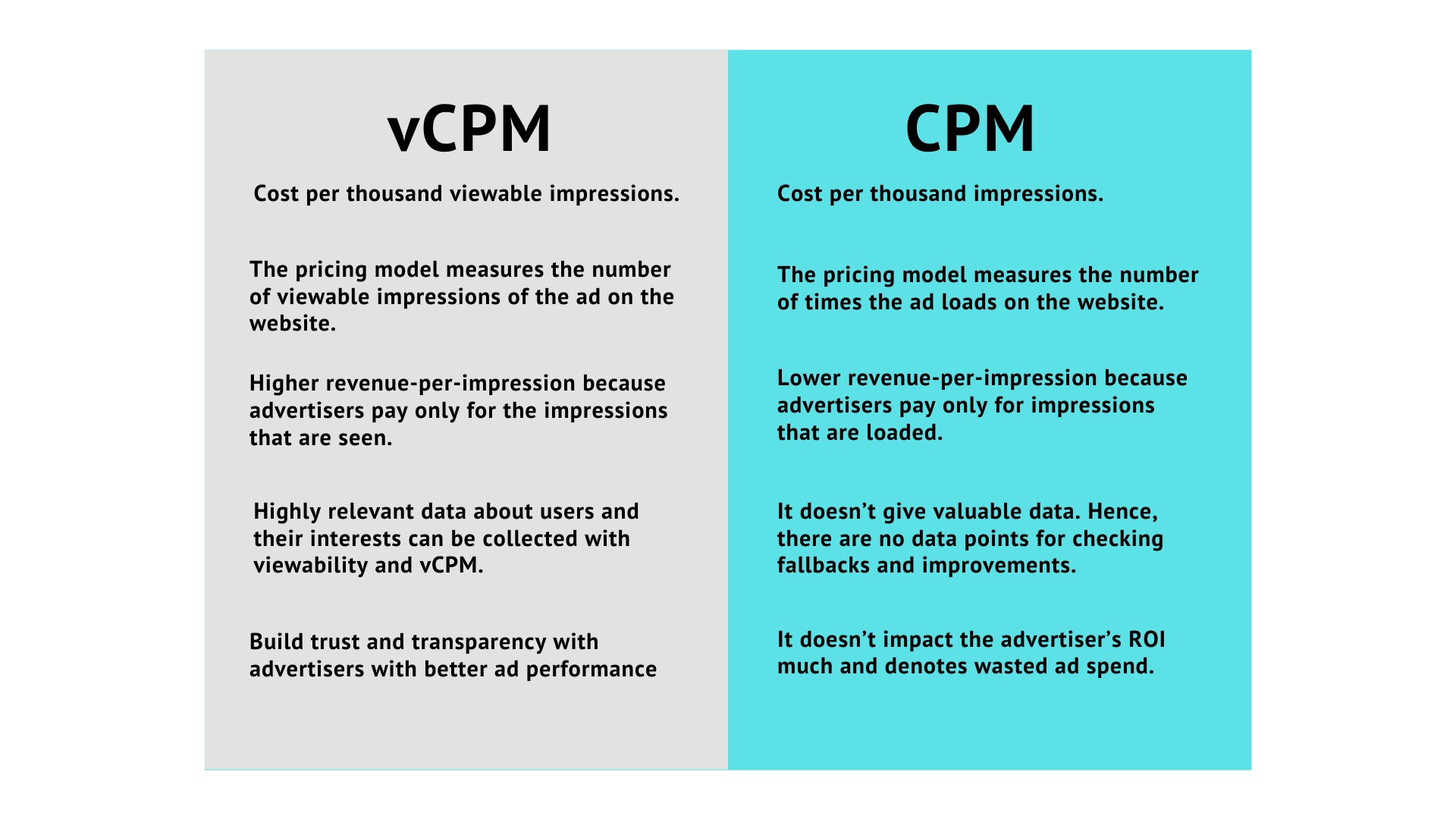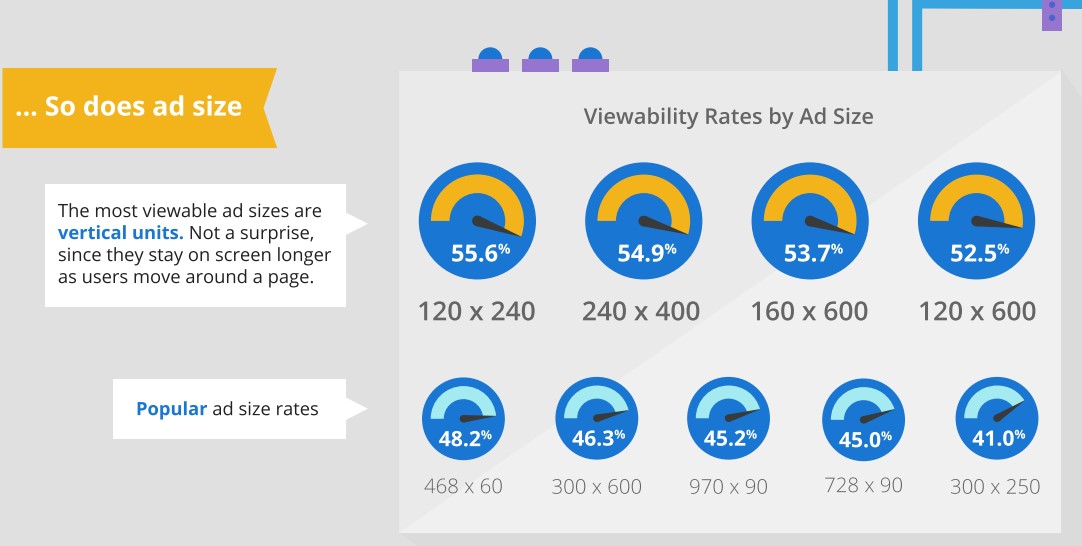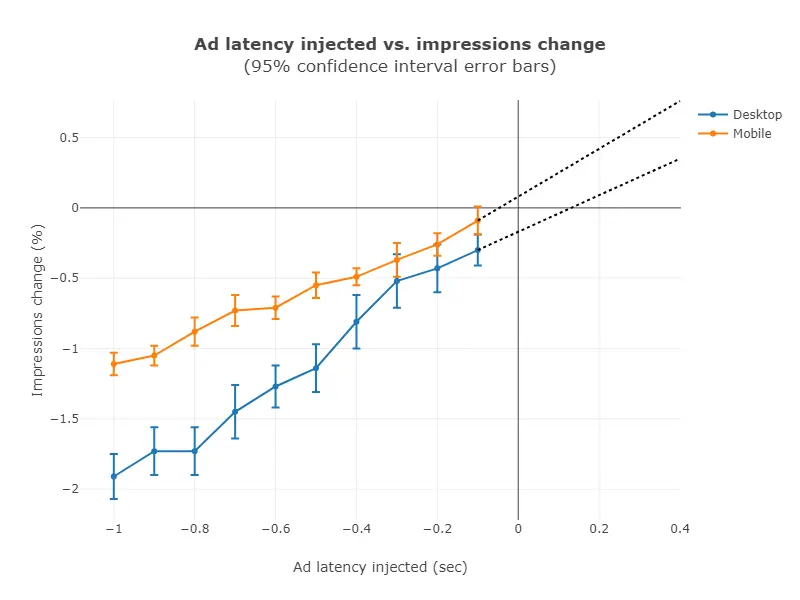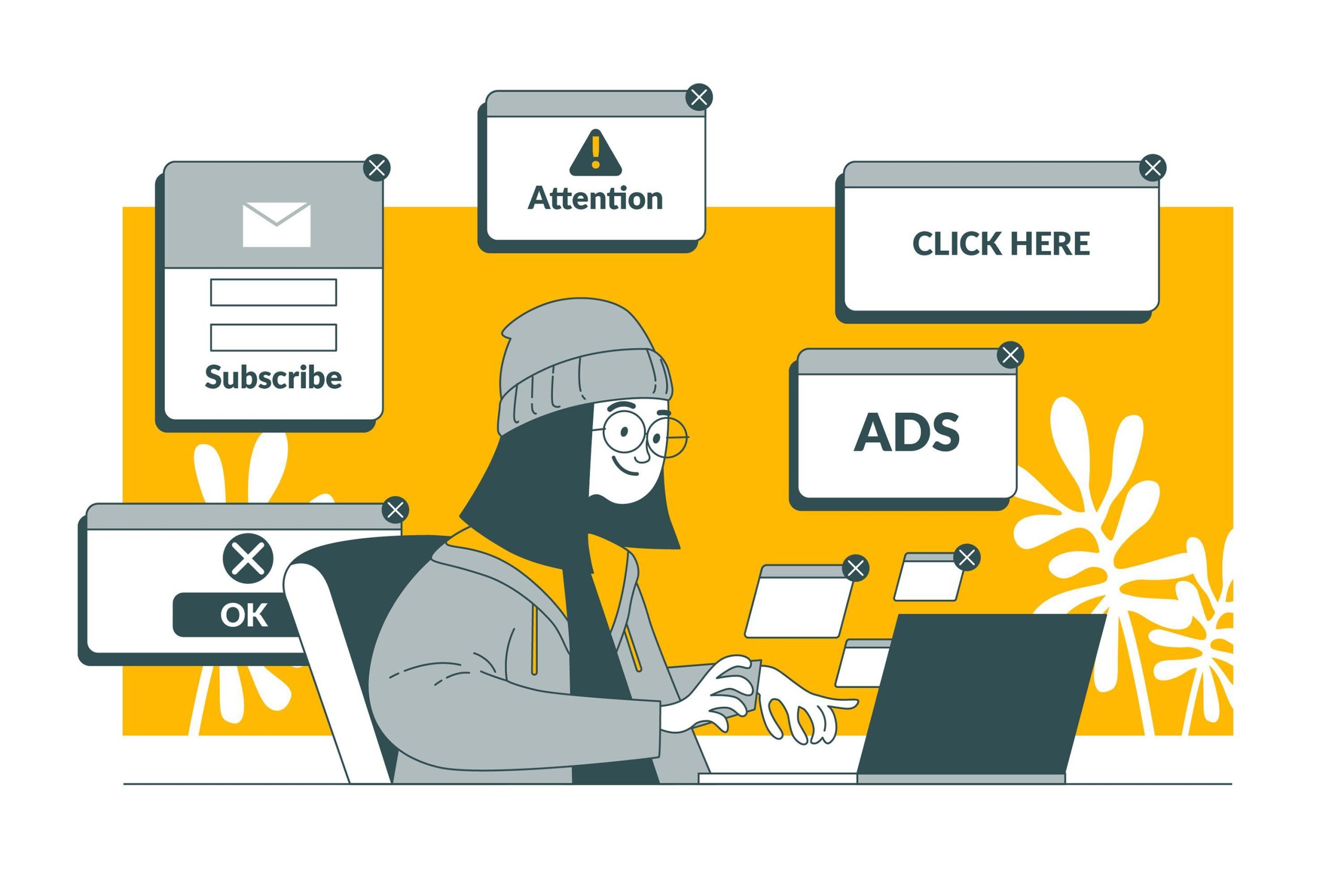Significant changes are not new to the advertising industry!
Five years ago, publishers earned money from ads just by showing it. No one cared if it was seen or not.
But now it matters. Viewable impressions are demanded from the buy side and are being considered for measurement and analytics.
Therefore, the new pricing model called vCPM came into the picture. It is indeed important for publishers to have a full understanding of it.
This article is a detailed guide to vCPM. It will help you understand why you should care about it, provide a reality check on the metric’s reliability in the upcoming years, and explain how to improve ad viewability and its benefits.
So, join us in learning the importance and nuances of this solid pricing model, which is also a reliable metric.
Table of Contents
What Is a vCPM?
vCPM is an advertising metric that stands for Viewable Cost Per Mille or viewable cost per thousand impressions. It is a pricing model that denotes the money the publishers will get paid for every thousand actual impressions on ads shown.
CPM is still the popular pricing model used in digital advertising. However, advertisers now seem to be more inclined towards vCPM as it promises for viewable impressions. You can easily attract them with an ad inventory with a high viewability rate.
Suggested reading: vCPM vs CPM: The Critical Factor Publishers Have to Know
Why Should You Care about vCPM?
Because advertisers want ad space with a high viewability rate!
They don’t want to spend their money on unseen ads, which will not benefit them. Bidding on viewable impressions gives them meaningful views and true insight, allowing them to shape their budget and get a high ROI.
Hence, the first reason why you should care about vCPM is that advertisers prioritize websites with high viewability rates. Therefore, vCPM became their reliable pricing model. You have to follow that to attract potential demands.
- If you focus on fostering a positive user experience, the ad viewability rate of your website will increase.
- With a better user experience and a higher ad viewability rate, you can collect valuable and relevant data. For instance, insights like what readers are more focused on, their browsing behavior, and their interests.
- The most relevant data and higher viewability rate will attract high vCPM demands. To be said specifically, you can attract premium advertisers. The data you share with advertisers will help them in more targeted advertising.
- Therefore, a high fill rate is ensured by ads from potential demand partners.
- Higher fill rates increase your ad revenue and yield.
Potential advertisers who want remarkable results and high ROI are increasingly preferring vCPM. Publishers can shift that fortune to them if they master the art of ad viewability.
Why Is the vCPM Pricing Model Better than the CPM Model?
The birth and choice of vCPM is all about the advertiser’s interest in it.
vCPM allows them to pay only for true impressions. They spend on where they will get assured ad performance.
So, as a publisher, what will you get from this?
CPM and vCPM coexist in today’s programmatic advertising. Not all advertisers consider viewability and vCPM, but only a few high-potential demand partners. The reason is publishers will, in return ask for a high vCPM for providing high visibility and ROI.
So, when you focus on improving it, you can attract premium advertisers. Hence, vCPM can be the best pricing model for increasing ad yield.
You will stand out and remain competitive in the wide landscape. Potential demands will knock on your door and pay you high.
What Is the Difference Between vCPM and CPM?

Best Strategy to Increase vCPM
You know now that increasing viewability is the only way to increase your vCPM. Simply follow the tips below to learn how to improve ad viewability and attract higher vCPMs.
- Optimize ad placement using heatmap tools. The heatmap tool is a feature of Google Ad Manager (GAM). It gives data about the page positions with which users interact most.
- Try AdSense auto ads. It uses machine learning to find suitable ad formats and placements. You can also experiment with different ad formats and placements in GAM.
However, for best results, you can also seek the help of an ad monetization partner. They can help you navigate and determine the best ad formats and placements for your website.
- Try video ads for higher engagement and viewability, as they are the top ad format with a higher viewability rate, 73% in 2022.
- Try native ads to engage users with a non-intrusive experience. This elevates user experience and viewability at the same time.
- Choose ad sizes that outperform in viewability. According to Google, vertical ad units do well. Popular ad size rates with higher viewability rates are 468×60, 300×600, 970×90, 728×90, and 300×250.

- Improve Core web vitals. Google directs more traffic to websites with good core web vitals. So, you need to find the right balance between a good UX and maintaining viewability.
- Try interactive ads like rich-media ads, sticky ads, and pop-up ads when the user is about to exit. Since the user is already ready to exit, this will not hurt the user experience but will instead get you viewable impressions.
- Optimize page latency. Use Publisher Ads Audit for Lighthouse to find factors slowing down your page. It also gives suggestions accordingly, like in the picture below, where it suggested using Google Publisher Tag’s lazy loading to load the 11 ads out of view.

- Use server-side header bidding. It shifts the workload from the website to the server, improving the user experience and ad viewability.
- Use ad refresh in frequent and adequate intervals. Google recommends refreshing ads every 30 to 120 seconds. Doing so allows you to show two to three ads in the same place when users stay long on the page. It leads to improved viewability and ad revenue.
- Improve ad loading time as high ad load time decreases viewable impressions and ad revenue. Even a one-second delay affects the viewability rate by 2.9% in desktop traffic and 3.9% in mobile traffic.

You can improve ad loading time with strategies like Asynchronous tags and Content Delivery Network (CDN) to load ads quicker and increase viewability.
- Follow industry standards like Better ad standards and Acceptable ad standards to place user-friendly ads. It reduces the ad blocking rate of your website, which is one of the leading factors causing the loss of ad impressions.
It is not easy to get user attention in a space of oversaturated ads. To improve your website’s viewability rate, you have to try as many approaches as possible.
Sounds like a lot of legwork? Too many technicalities? You can take the help of full-service ad monetization partners here. They can help you navigate through and execute the best solutions. Connect with us, and we will introduce you to the best monetization partners best suited for your case
What Is Next After Viewability and vCPM for Cookie-less Era? It’s Attention
As the adtech ecosystem trails in the vital cookieless era, publishers and advertisers prioritize the attention metric more than viewability.
Attention metric is measured with various parameters such as viewability, creative size, ad position, eye tracking, page frequency, etc. It measures how users interact with the ad and to what extent.
While the attention metric includes such extensive insights, viewability measures only the opportunity for ads to be seen. This data is not enough and will not contribute much to the results and ROI.
That is why attention is next after viewability, and it is gaining prominence. The reason is cookie demise and the decreased consumer attention span due to the oversaturation of ads and content online.
There are more chances of introducing pricing models that emphasize attention, like vCPM for viewability. The key to adapt all these dynamic changes is maintaining a good user experience.
The changes you make to the website by keeping users at the forefront will always keep you ahead. Also, you can see a consistent rise in ad revenue, or in the least case, you will not face a severe downfall due to sudden changes in trend.
True Views, Higher Revenue Potential
In the ever-changing adtech landscape, the auction system moves towards true value and demands accuracy in everything it does.
In that sense, you should embrace vCPM and ad viewability next.
Focus on meaningful ad views that matter and positively impact ad revenue. Prepare flexible ad inventory that attracts high prospect demands, improves market value, and increases ad yield.
By doing so, your website will stay strong and resistant to cookie demise, changes in the diversity of programmatic channels, and the rise of attention metrics. Specifically, the ad inventory with a higher viewability rate is easy to move forward to a digital landscape where attention matters more.
Hence, you can enjoy constant revenue flow irrespective of market fluctuations.























